Text

made this on mspaint what y'all think
every time I see this chip bag I think it's going to say scoops! all berries, so I decided to bring my fantasy into fruition.
#memes#meme#captain crunch#cap'n crunch#funny#shitposting#shitpost#idk what to tag this I'm used to tagging bug facts
8 notes
·
View notes
Photo
I will protect him he is friend

teeny hellbat sticker i made for discord, he’s just a little guy! help him!!!
48 notes
·
View notes
Text
Tumblr has got to have one of the best recommended sections compared to any other site, because I simultaneously get my daily dose of bug content and get amazing works of art such as this.
giggling to the point of tears in my room as I draw a dozen ugly little megatrons for this video (audio from my favorite video on YouTube dot com)
#i had this playing in the background as i wrote my last post#i can't even tell what continuity this is supposed to be#but i love it so much
2K notes
·
View notes
Text

✨cool bug facts's✨
Trachelophorus giraffa, or the giraffe weevil!
Aughdhgh the neck

The anatomy of these Achates-shaped insects!!!
The males necks are typically 2-3 times the length of a females, but can be much larger, as they are one of the most diverse species of weevils when it comes to height.
Their whole body and wings are black, but their elytra are are an ostentatious red.
The males are around 2.5 centimeters long, which is nearly the longest any attelabid species is.
The larger males snouts and legs' tissue aren't as metabolically active as the smaller males. The larger males also have more cuticle, meaning that despite their ridiculously large size, they use up less energy than the smaller males.
The larger males can be 30 times the size of the smaller males.
Smaller males typically die younger than larger males.
The females have very powerful legs compared to the males.
They are a species in the attelabid family, which is one of the few families of primitive weevils.
Diet.
The larvae eat the nests they were born on.
The adults eat the leaves from the Dichaetanthera arborea, unscientifically known as the giraffe beetle tree, because that's really all this tree has going for it.
Behavior.
The males use their necks to joust with other males, similar to how other beetle species use their horns and mandibles. But instead of trying to pick up and throw their opponents, they try to shove them off their tree.
When startled, they will backflip off their tree.
In order to actually be able to mate, the smaller males will sneak under the larger males while they're mating.
If a female prefers a specific male who's fighting over them, they will walk in between the fighting males, breaking up the fight. They will then shoo away the male they don't like, and mate with the preferred male.
Even if they haven't mated yet, the females will make a nest for their eggs using their neck, by way of pressing their neck against the leaf to make indentures. After making these indentures, they use their legs to fold the leaf in half and curl up the edge of the leaf. When they do this, they only lay one egg in the curled end of the leaf and snip the leaf off their tree. They will then go do this to other leaves until they've laid all their eggs.
The males may try to help their mate make their nests, but they typically don't follow the normal procedure. This can lead to the female pushing their mate away after a while. The males may actually help by getting rid of smaller insects that could harm the eggs.
Habitat.
They live in Madagascar, but have a cousin species with the same name that live in New Zealand.
They spend their entire lives on a Dichaetanthera arborea. They are rarely seen not on their tree, except for when they're in the larval stage, as the larvae are born on the collapsed leaves from the Dichaetanthera arborea.
Cool fact that didn't fit here.
They were only discovered in 2008, which unfortunately means that not as much is known about them compared to other insects.
#bugs#insects#beetles#weevils#primitive weevil#belidae#giraffe weevil#trachelophorus giraffa#bugblr#entomology#coleopterology#cool bugs#cool bug facts#cool bug's#cool bug fact's
102 notes
·
View notes
Text
The giraffe weevil is my beloved.
(The giraffe weevil is the red and black one with an elbow shaped neck)
people have probably already seen this, but...weevils are pretty cool.
#coleopterology#bugs#cool bugs#weevils#very cool weevils#giraffe weevil#trachelophorus giraffa#and the other weevils but they aren't as important as my beloved
4K notes
·
View notes
Text
A very angry, very silly little guy. I would give them a little pat on the head if I met them.
*ANGRY BEETLE NOISES*
context: I rolled a log over and found a group of passalids (Odontotaenius disjunctus) so i put them in my hand to take pics. Then I noticed another one on the other side of the log, but that one must’ve been from a different colony because they did not get along
(Virginia, 10/15/21)
7K notes
·
View notes
Text
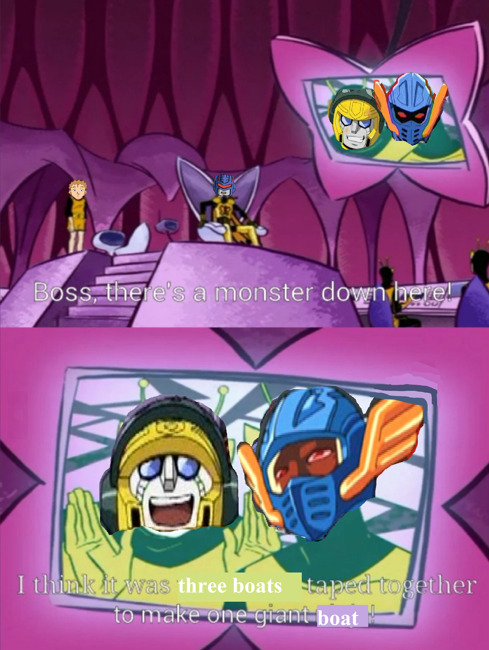
"Boss, there's a monster down here!"
"I think it was three boats taped together to make one giant boat!"
A meme. It's a joke about Shockwave (English name; Tidal Wave) being three boats that can combine into his main mode.
I will be doing more cool bug facts's but I have too many cool bug's I want to write about and I can't decide which I should do first.
#transformers#tf#transformers armada#transformers micron legend#tf armada#tf micron legend#micron legend#tidal wave#tf tidal wave#transformers tidal wave#shockwave#tf shockwave#transformers shockwave#hotshot#tf hotshot#transformers hotshot#blurr#silverbolt#transformers blurr#tf blurr#tf silverbolt#transformers silverbolt#rad white#transformers rad white#transformers rad#tf rad#tf rad white#transformers red alert#tf red alert
33 notes
·
View notes
Text
✨cool bug facts's✨
It's Megatron's birthday!!!!

This is Megatron from Transformers: Micron Legend, the English name for the show is Transformers Armada. He is designed after a stag beetle. He kickstarted my spiral into obsession with entomology.
Technically, we don't know when his birthday is, but we do know that December 1st is the birthday of the Megatron seen below.
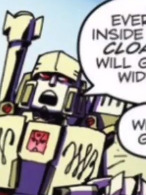
He is not designed after an insect, but he is very cool.
I want to talk about Micron Legend Megatron's design. Firstly, he is not a moose or reindeer. Thrust at one point says "I told you not to call me that, you stag beetle." and Hotshot refers to him as a 'stag beetle head' (they do not call him this in the English dub).
Secondly, his left hand resembles a female stag beetle's, being very large and having very sharp fingers, while his right hand looks like the rest of the character's hands.
Thirdly, he has an abnormally small head, like a female stag beetle, while he has the mandibles of a male stag beetle.
In the sequel series, Superlink (Energon in the English dub), he is entirely based off a female stag beetle (besides the fact that he doubled in height since the last series).
He is a very cool Megatron.
Other cool Megatron's include;
G1 Megatron 1984

Thoughts about him;
If I remember correctly, in 'The Secret of Omega Supreme', it's said that he was built to be machine of destruction, to think about nothing but destroying anything that stands in his path. Does that mean he can't properly think for himself?
In episode 16 of season 3 'Webworld', he goes to therapy, gets some awful therapists who are essentially going to kill him and then give him a new processor as it's the only way to cure him. He manages to escape and then blows up their planet.
Edit from several days later, December 9th 2022 (this was posted on December 1st 2022).
It was not the secret of Omega Supreme that said that, that was said in 'The Five Faces of Darkness', which is a 5-part series that starts off season 3.
G2 Megatron 1993
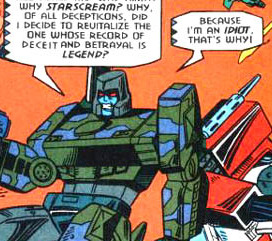
Thoughts about him;
Underappreciated. He's just a little bit ugly but he deserves some love too. He can't get any love from Kiloton anymore, as he's dead.
Also he's apparently in a relationship with this guy called Kiloton, you don't really see him much in the comics, his name isn't even said, but he caused Megatron to start a second war, this time on the humans, after they killed him. He also doesn't get enough love.
Speaking of Kiloton, the Megatron who's birthday it is? In one comic he was shown in a bar showing off his poetry to this guy called Impactor. It would later be stated that Impactor's old name was Kiloton.
Beast Wars Megatron 1996

Thoughts about him;
As much as it may have already been said about him, I would like to reiterate that he is Barney the dinosaur. If not, then a relative of Barney the dinosaur.
His voice actor (David Kaye) would go on to voice beetle Megatron in the English dub of Micron Legend. By voicing Optimus Prime in the 2007 series Transformers: Animated, He would become the first voice actor to have voiced both Megatron and Optimus Prime in their career.
He is also referred to as the Queen by a character called Inferno, which makes for one of my favorite lines from the franchise.
(For context, Dinobot left the Predacons at the start of the series, and has now returned to them for the time being.)
Megatron: Inferno, aid Quickstrike.
Inferno: Yes, my queen.
Dinobot: I was not aware you had given yourself a new title.
Car robots/Robots in Disguise Gigatron/Megatron 2001

I'm including him in the Megatron section, despite the fact that he's called Gigatron in the original dub, because the English dub is more popular than the Japanese dub, meaning he is more recognized as Megatron than Gigatron. I will be referring to him as Gigatron as I haven't watched the English dub.
Thought about him;
He's kind of plain? But I still enjoyed watching him do stuff. Just causing a little bit of mayhem for no good reason. And I also just love his personality. He has issues and I lowkey kind of relate. Not to the whole killing people to get what he wants, but him just trying not to lose it while broadcasting to a bunch of people about how he's going to blow up a dam but it keeps not working so he keeps having to call Gel-Shark (English name; Skyebyte) to find out what's happening.
Also, there was an episode where he put on drag and then got catcalled by an Autobot who didn't recognize him.
Unicron trilogy Megatron/Galvatron 2004

This is the same guy as beetle Megatron, from Micron Legend's sequel series Superlink, which came out in 2005. His new name is Galvatron. In the English dub he isn't called Galvatron until he gets an upgrade that turns him purple.
Thoughts about him;
As previously stated, he is designed after a female stag beetle despite being referred to as a man. I am in full support of this.
He also has this guy called Shockfleet (English name; Mirage) that nicknamed him 'Gal-sama'. 'Sama' being a Japanese honorific for someone you worship.
He's very silly. Goofy, might I add.

This is Master Megatron from the third series in the trilogy, Galaxy Force, which came out in 2006.
Thoughts about him;
He isn't a stag beetle. I am fuming.
He looks like he's wearing a crop top and cowboy pants with overalls. And he has these spiky goth knee-high boots on.
The reason why his left arm is so wack-looking is because he's powerlinked with Dark Ligerjack, who is essentially his cat that attaches to his left arm.
Dark Ligerjack's name sucks so I called him Ebony Dark'ness Dementia Ravenway every time I had to refer to him.
Transformers IDW1 Megatron 2005

That's this guy. Happy birthday my guy.
He is very cool. If you can, I would very much recommend that you read the IDW series, specifically the one that ran between 2005 to 2018. Just to differentiate because there is a recent IDW series that came out in 2019. The series is very long and therefore expensive, so there is a good chance that someone would not be able to read it. And if they can they will probably get lost trying to figure out which comic they're supposed to be on. Just skip Spotlight: Arcee, that story was retconned, and is very offensive.
Thoughts about him;
This may start a fight, but you are not supposed to forgive him for everything he's done just because he went to therapy and made a vow to never kill anyone again. He says this himself, that it may be cruel, but with everything he's done, and the billions of people he's killed, he deserves to be executed. You're supposed to feel sympathetic towards him though, and you are supposed to feel sad when he dies. But you never even think about the people who he killed because you never had a chance to get to know most of them, because even with how long this series is, it isn't long enough to tell the stories of billions of people. Someone's life is much longer than the amount of time it takes to kill them. Not to mention the brutal ways in which he killed them. The comics, I feel, make it known that you shouldn't forgive him, and frequently remind you about the things he's done, while still making you understand what his viewpoint and what his mental health was like to cause him to spiral.
And it all leads back to that the Functionist council should have never existed in the first place. While most people that the council ruined the lives of didn't turn out like Megatron, a lot of them died or were forced to live in awful conditions, and the one's that did protest would be greatly overshadowed by the actions of Megatron, essentially making it so that those people had to join his murder spree to even feel like they are free. But trapped in the echo chamber that was the Decepticon cause at this time, I would argue they weren't really free. Megatron could kill any of them at his whim, and he would, and he has.
He came to a point where all sentient live besides his own had no meaning to him. His actions eventually caught up to him, and with that, he realized that he isn't someone who can be expected to mingle with the people who he's hurt without them complaining or being scared of him.
And he somehow accepted that better than some people who read these comics.
Anyway very cool Megatron.
Transformers Animated Megatron 2007

Thoughts on him;
Haha jet go brr
To me, he just kind of feels like the default Megatron. I like him and all, but he feels a bit too generic. I really don't have that much to say about him.
Prime Megatron 2012
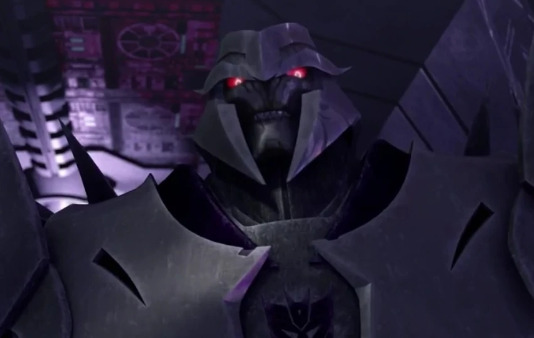
To be honest, Prime is one of the few shows I haven't watched yet.
He looks silly though/affectionate.
Earthspark Megatron 2022

To be honest I haven't watched that many of the newer shows/comics, so I'm skipping to Earthspark.
Thoughts about him;
Only 10 out of 26 episodes have come out, so I can't say very much about him. But I do feel hopeful that they are going somewhere good with his storyline.
I will point out, his storyline is a pretty heavy-handed jab at police brutality and jail conditions, but it is a nice surprise for the fact that this show aired on Nickelodeon.
Also, and this may controversial, but when I first saw him, both me and my brother (doux-mirages) talked about how he's the ugliest Megatron.
He is a very cool Megatron though.
#Transformers#tf#tf megatron#megatron#tf g1#transformers generation 1#transformers g1#tf g2#transformers g2#transformers generation 2#transformers beast wars#beast wars#rid 2001#car robots#robots in disguise#robots in disguise 2001#unicron trilogy#armada#micron legend#energon#superlink#cybertron#galaxy force#tf idw#transformers idw#more than meets the eye#mtmte#transformers animated#tfa#transformers prime
75 notes
·
View notes
Text
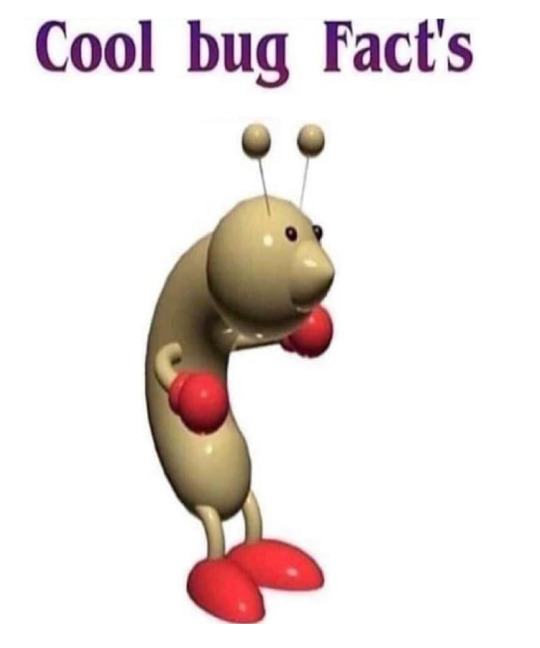
✨cool bug facts's✨
The creatonotos gangis!
TW: These are literally moths with tentacles
Imagine chilling in Australia, watching some moths, and some hot moth babes fly into your area and one of the moths you're watching sprouts tentacles.

The anatomy of these oddly affrighting Insects!!!
You see those tentacles? those are actually their coremata (also called hair-pencils), which on most male lepidoptera are straight, stick-like appendages of which they only have one of. Except for these guys for some reason. They're special and have four wriggly corematas (or whatever the plural is). The coremata is used to secrete pheromones, pyrrolizidine alkaloid, specifically, in order to attract a mate.
Do the hairs on their tentacles count as pubic hair???
They have a wingspan of 4 cm (1.5 inches).
While their abdomen is usually red, they may occasionally have a yellow abdomen.
Their larvae are brown and very hairy, with a yellow stripe along their back.
Like every other part of their body in both larval and adult stages, their cocoons are very hairy.
The females abdomen isn't as large or inflated as the males.
Diet.
The larvae eat groundnuts, rice, finger millets, sorghum, pearl millets, coffee, sweet potatoes, pomegranates, and alfalfa. These are all plants that have pyrrolizidine alkaloid in them. This is how they're able to release their pheromones. Meaning that if they don't eat enough as a larva, their coremata won't even grow to a size large enough to secrete pheromones.
While the adults don't eat very often, they do occasionally drink the sap from their host plants. Especially if they didn't eat enough as a larvae.
Behavior.
The pheromone that the males produce can only attract female moths, whereas male moths find it repulsive and will try to fly away from it.
If a female is attracted by the males pheromones, they will wiggle their abdomen at them, signaling that they want to mate.
(Plant behavior)
When they eat enough of a host plant, but not enough to kill it, the plant will release a poisonous amount of pyrrolizidine alkaloid, which tends to kill any farm animals that eat these plants.
Habitat.
Unsurprisingly, they are found in Australia. And Southeastern Asia, which also has some bizarre insects in it, but doesn't quite have the same reputation as Australia. They can also be found in Japan, China, and Papua new guinea.
The larvae are born on and live on their host plants.
The adults tend to hang around their host plants in case they ever need any food.
Cool fact that didn't fit here.
While trying to study their coremata due to it's abnormal shape, scientists realized the difficulty in trying to study coremata, and invented a machine to inflate the coremata on dead specimens. and they called it the Phalloblaster ���😭.
#bugs#insects#moths#moth#creatonotos gangis#bugblr#entomology#lepidopterology#cool bugs#cool bug facts#cool bug's#cool bug fact's
166 notes
·
View notes
Text
'Good cop, bad cop' implies the existence of a 'good cop'.
5 notes
·
View notes
Text
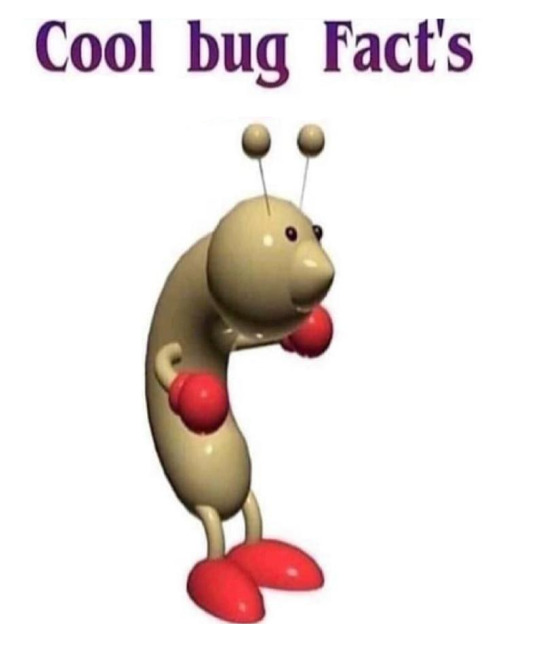
✨cool bug facts's✨
Macroglossum stellatarum, or the Bee moth/hummingbird hawk-moth! (Bee moth is their European name.)
They have the eye of Sauron. 👁
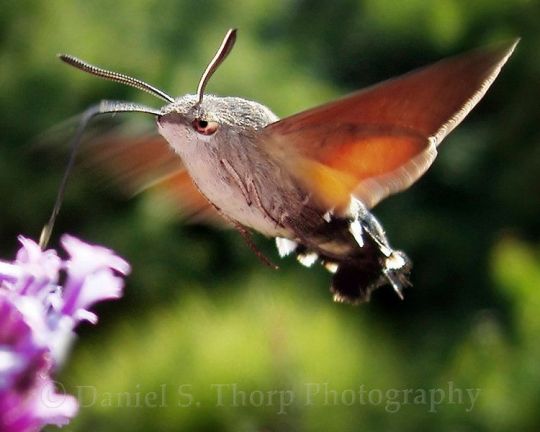
The anatomy of these cozening insects!!!
Immediately noticeable, they look like hummingbirds, and have fooled several people into thinking they are hummingbirds. This is actually because they evolved in an environment similar to that where the hummingbird evolved from, and they are actually unrelated. This is called homoplasy, or convergent evolution.
Uncommon for a moth, they don't have any sexual dimorphism in their antennae.
While the abdomen fluff on most moths is flat, theirs puffs out, giving the appearance of tail feathers.
Most species, if not all species, are smaller than the smallest species of hummingbird, the bee hummingbird.
Similar to hummingbirds, they can fly backwards. They are one of the few moth species able to do so.
Their larvae are called hornworms because they have a little horn on their rump. This horn is perfectly safe to touch despite its coloring, which is usually a purplish red, but will turn blue with an orange tip when they reach the last instar.
The eggs are a pale green color, as to match up with the buds of the Galium plant. The larvae are born yellow, and as they get older (usually) turn green, as to blend in with their surroundings, which would typically be the Galium plant. If their surroundings aren't green, though, they might take on a different color.
The larvae in some species also have these dots throughout their whole body that look like eyes, and when you reach the bump at the top of their head the pattern inside the dot is really tiny and it makes them look ravenous.
They on average produce 2 broods per year, but in warmer climates may be able to produce up to 4 broods.
Most of their senses are very weak, and they almost exclusively rely on their enhanced eyesight, as they are able to detect even the slightest movement and easily recognize things like plants and colors.
They can flap their wings 80 beats per second on average, whereas most species of hummingbirds can only flap their wings at 53 beats per second. The only hummingbird that can match their speed is the amethyst wood-star hummingbird, which has the world record for the fastest wing-beating out of any hummingbird species. And it should be noted that the amethyst wood-star can only flap their wings at 80 beats per second, 80 beats per second for the hummingbird hawk-moth is just what the majority are able to, with many species having much faster wing-flapping speeds.
Like hummingbirds, they make an audible humming noise when they fly.
Their wingspan is around 40 to 45 millimeters (1.6 to 1.8 inches).
They still fly around in extremally high temperatures where their thorax's temperature may get as high as 45℃ (113℉), this is the highest temperature that any other moth species can withstand, and is near the limit for when other insects muscles stop working.
The larvae move to the ground to pupate, usually to the base of their host plant or on dead leaves. Their pupae are a pale brownish color as to blend in with the ground.
They evolved to have colors that their predators can't see, rendering them practically invisible to these predators.
They are presumed to be able to fly at 5.3 meters per second, or 19.3 kilometers per hour (12 mph), based on the speeds of other moths in their genus.
Their proboscis is as long as their body is, hence why they keep it curled up.
Diet.
The use their proboscis to drink the nectar from flowers. They prefer longer flowers, such as honeysuckles, jasmine, buddleia (sometimes called butterfly bush.), primula, pansies, lilacs, verveine, echium, phlox, stachys, the flowers off of tobacco plants, and red valerians (Red valerians are sometimes called kiss-me-quicks).
The larvae eat the leaves off of honeysuckles, hawthorns, epilobium, chickweeds, centranthus, other species of the bedstraw family (such as coffea, which is the plant that produces coffee), tomato plants, and some species' larvae eat tobacco leaves. The fact that the larvae might eat their crops makes some farmers consider them to be a pest.
Behavior.
The females will lay up to 200 eggs each on an individual Galium. The reasoning for this is so that the larvae will have an easy meal when they first hatch, and won't have to share it with their siblings.
The reason they prefer longer flowers is because they know they'll have less competition from other nectar-eating animals, as only species with long proboscis' can drink the nectar from these flowers.
They can remember where particularly nectar-filled flowers are and tend to return to them everyday.
While they usually only fly during warm days when the sun is out, they have been spotted flying on rainy days.
After collecting their nectar, they return to the same spot everyday to rest.
When a male and a female spot each other, they begin to chase after each other, in what is essentially a game of tag, where they switch back and forth between chasing after the other and running away from the other, until eventually one catches up to the other and they mate.
Habitat.
They usually only stick around for the warmer parts of the year, but they are found all year round throughout Portugal all the way to Japan (by 'Portugal to Japan' I mean that the zones it inhabits all year round literally form a line that goes from Portugal to Japan). They are found throughout Europe, Asia, and Africa. They have occasionally been found in the United States, usually around Texas, California, and Utah. Because the Australians don't need to see them, I guess.
They prefer the heat and will usually live in tropical areas, but some species are found in much colder environments such as Alaska.
They prefer to live where there are lots of flowers, such as woodland edges and gardens, but may also live in coastal and suburban areas.
They usually overwinter (hibernate) in between the cracks in trees, rocks, and even buildings.
Cool facts's that didn't fit into these categories.
Not only are they called bee moths there, but they aren't even considered to be hawk moths in Europe.
Hummingbird moths are a different species from hummingbird hawk-moths, with the main difference being that hummingbird moths aren't as large due to the fact that they are sphinx moths rather than hawk-moths. They are a part of the same family, however.
The only reason that they're in the Sphingidae family is because their larvae were thought to look like sphinxes.
#bugs#insects#moths#moth#hummingbird hawk-moth#macroglossum stellatarum#bugblr#entomology#lepidopterology#cool bugs#cool bug facts#cool bug's#cool bug fact's
15 notes
·
View notes
Text
Opossums
I'm writing a post, you see, and it's coming out longer than I thought it would, and I still have a lot more sources to read, so I was contemplating if I should add more facts's or if it's already fine. So I'm just skimming through this one source, and it mentions that possums have opposable thumbs???? and I didn't know that and now I'm very distressed.
They are little creatures why do they need opposable thumbs????
1 note
·
View note
Text

✨cool bug facts's✨
Cicindelinae, or the tiger beetle!
They look like a dogbane beetle's lanky cousin who just got his Adam's apple. But he has a good fashion sense, I guess.

The anatomy of these bling-blingy Insects!!!
The fastest species of tiger beetle (Rivacindela hudsoni) can run up to 9 km/h (5.6 mph), which is 125 body lengths per second, and are considered to be the fastest land animal for their size.
Depending on the species, their colors can either be very bright, or completely black. Each species evolved into their colors to match up with their environment.
The larvae have very large, shovel-like heads and a humped back that they use for catching prey by rolling over backwards and catching the prey with their backs. The adults catch prey simply by chasing them.
One of their mandibles is usually around 1 millimeter smaller than the other.
The larvae have a pair of hooks on their abdomen so that they won't be dragged out of their burrow when trying to catch prey.
Their main distinction from ground beetles is that their head are wider than their thorax.
They fully develop between 1 to 4 years old, depending on their environment, species, and food supply.
The won't emerge after completing their developmental cycle for 3 days in order for their exoskeleton to harden, but when they emerge their exoskeletons are still a little soft and they have lighter colors, making them a very easy target for predators.
They can release several poisons when threatened, including cyanide. They can't produce enough poison to harm a human, but may be able to kill a small insect or spider (or just a small animal in general). One species can emit a poison that smells like bubblegum.
Diet.
The larvae's usual meals consist of smaller insects, such as ants, beetles, caterpillars, flies, grasshopper nymphs, small terrestrial crustaceans, and even small spiders.
The adults don't eat as much as the larvae, but they do eat the same things, this time being able to chase after their prey.
Behavior.
When they're chasing their prey, they run for a few moments, and then stop, and then start running again, and repeat. This is due to the speed that they run at being too fast for their eyes to properly process visual stimuli.
The females burrow into the sand to lay their eggs, and when their larvae hatch they begin to dig deeper into the burrow their mother made for them by putting their head's shape to good use and shoveling further into the ground, and it eventually reaches about 30 to 60 centimeters (1 to 2 feet) deep.
In order to dissuade other suitors, males will clamp their mandibles around their mates thorax and ride on top of them to show that they are taken.
The larvae wait at the entrance of their burrow until an insect or spider walks by and leaps at them to try and catch them. Adult tiger beetles stalk their prey like an actual tiger and then run or fly at them, usually not giving them enough time to react before catching them.
They can hear the echolocation of bats, and will turn around and try to fly away while making a noise back to the bats to try and signal that they're poisonous.
Habitat
They live in almost every part of the world.
Most species prefer to live on any surface with sand, or sunny surfaces, as they prefer heat like most beetles.
Cool fact that didn't fit into these categories.
Their larvae are sometimes called 'doodlebugs', although the name is more commonly associated with the antlion.
#bug#insect#beetle#tiger beetle#entomology#coleopterology#bugblr#cool bugs#cool bug facts#cool bug's#cool bug fact's
53 notes
·
View notes
Text
I have found Wado, he only wanted to buy clothes at the goodwill so people wont keep mistaking him for Waldo.
Hello beautiful people of tumbl

this is Wado. he has gone missing in this next picture

i need you guys to help me find him
note: I dont care where Waldo is. Waldo can go suck 3 eggs. Wado is much more important. Please help me find Wado.
731 notes
·
View notes
Text

✨cool bug facts's✨
TW: Arachnophobia
(I know these aren't insects but it's spooky season.)
The Phoneutria, or the Brazilian wandering spider, sometimes called the banana spider! (I used orange because I couldn't see the yellow.)
They just want banana🍌🕷 😫🥺
Also their species name is abnormally short because it's just the Greek word for murderess.

The anatomy of the minacious insects arachnids!!
Their legs can grow between 13 - 18 cm (5.1 - 7.1 in), and their body length can be from 17 - 48 mm (0.67 - 7.89 in)
They're araneomorphs, and have the longest body and body length in said group.
They usually have red hairs on their chelicerae (The appendages on their mouth), but some species may lack these hairs.
Both males and females have thick hair on their pediap tibia and their tarsi.
The fully developed males have bulges on the end of their chelicerae.
They either have black dots on their abdomen or have a significantly redder abdomen compared to the rest of their body. They also have black bands on the underside of their abdomen.
They're one of the only species of spider that can actually harm humans.
Only 2.3% of their bites are ever serious enough to need anti-venom, and this is mostly in reference to children.
Their self-restraint with their venom is very lucky, as their venom is stronger than even a black widow spider.
The males usually have less portent venom than females, except the species P. boliviensis.
The symptoms occur around 10 minutes after the bite and death might occur only 2 hours after the bite, in one case, death occurred only 40 minutes after the bite (Although this was in a child). The symptoms of a dangerous bite includes; There is a severe pain spreading across the entire limb, tachycardia, increased blood pressure, vertigo, fever, sweating, visual disturbances, nausea, vomiting, difficulty breathing, hypothermia, abdominal cramping, and paralysis. The cause of death tends to be respiratory arrest caused by these symptoms.
Part of why their venom is painful due to the high concentration of serotonin. If you're feeling down, don't seek these guys out for your serotonin.
They produce less venom during colder months, and more venom in hotter months. in cold months they have around 0.44 mg, and in hotter months 1.84 is the average. Some individual spider have had up to 8 mg of venom, this was in October, which would be considered a colder month. 7 mg of dried venom can kill 500 mice subcutaneously and 1,000 intravenously (Comparison courtesy of Wikipedia.).
They have been listed as the most venomous animals in the world by Guinness world records, although they do not currently hold that title.
There are only 6 species of Phoneutria.
The females can store any sperm produced after mating in a separate web chamber until they want to fertilize their eggs, and will lay up to 1,000 eggs.
They can live up to one or two years.
They can run very fast due to their strong legs. Unfortunately.
They can weave webs, although they only use this to hunt, climb, or wrap their eggs in.
Diet.
They eat flies, beetles, butterflies, moths, grasshoppers, locusts, crickets, other spiders, small amphibians, mice, and some females have been observed to eat lizards and snakes.
The younger spiders eat flightless fruit flies and pinhead crickets.
Prior to common belief, they do not eat bananas, they just live on banana plants.
Behavior.
When threatened, they cock up and raise their front two legs, revealing the dark bands on the underside of their abdomen. Some species use this to reveal the red hairs on their fangs.
They don't weave webs to live in, rather they wander around jungles at night (Hence the name.). During the day they hide in things like termite mounds, fallen logs, banana plants, and bromeliads. The specific species Phoneutria nigriventer hides in dark and moist places and around human dwellings.
Due to the fact that the P. nigriventer hide in dark places, they may hide in peoples houses and clothing, where if disturbed they might bite their perpetrator.
They can deliver dry bites where they purposely don't use venom. They've been reported to only use venom in one-third of their bites.
They have been known to accidentally bite.
The males tend to be very cautious when trying to mate with a female, and will try to dance to get their attention. Often times this leads to rejection, but if the female does choose to mate with them, they will try to leave quickly afterwards to avoid being attacked, as female spiders tend to attack or kill their mating partners.
Habitat.
They're found in forests in Costa Rica, Colombia, Venezuela, the Guianas, Ecuador, Peru, Bolivia, Brazil, Paraguay, northern Argentina, Panama, Chile, and Uruguay.
There is one species of Phoneutria that can only be found in the Amazon.
They live in forests, jungles, and Cerrado savannahs.
Some people have reported these spider being in their item shipments, usually of bananas. Although these reports are almost never actually a Phoneutria species. There have only been seven confirmed reports that were actually a Phoneutria.
#spiders#arachnids#wandering spiders#brazililan wandering spider#phoneutria#bugblr#spiderblr#entomology#arachnology#cool bugs#cool bug facts#cool bug's#cool bug fact's
10 notes
·
View notes
Text

✨cool bug facts's✨
The Tetragonula carbonaria, or the sugarbag bee!
Goth bee!! 🐝🐝🖤🖤
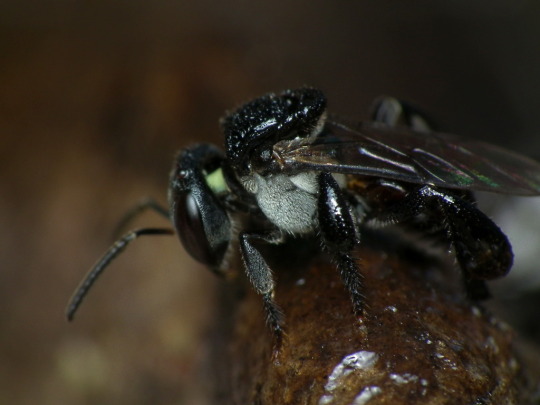
The anatomy of these indefatigable insects!!!
They are a species of stingless bee. This does not mean that they don't have a stinger, rather, they have a functionless stinger.
The adult workers and males are mostly black and have some brown tints in certain areas.
Newly emerged bees are white on every part of their body except their abdomen.
The workers body length is around 3.9 mm to 4.3 mm, and their wing length (including tegula) is around 4.1 mm to 4.6 mm. The males are the same length, but have different antennae.
They produce the largest honey and pollen pots out of the genus Tetragonula.
They store their honey in pot-like structures around the nest, that the queen lays eggs into, and then a worker quickly seals the pot that the queen fertilized.
Unlike other stingless bee species, they store their honey in pots rather than combs.
If their queen suddenly dies, they can build emergency queen cells by fusing two worker-sized cells that contain eggs or young larvae.
Some queens can only produce diploid males, who are infertile and physically weaker. Workers find these males to be a nuisance to the rest of the hive, and might kill a queen who produces diploid males.
The center of their nest is made up of honeycombs in a spiral shape. Even the molecules of these honeycombs are spiral-shaped.
Their honey has a sour taste to it.
Diet.
They pollinate the orchid species Dendrobium lichenastrum, D. toressae, and D. speciosum.
They collect their pollen from the Cycas media, which is a cycad.
Behavior.
Sugarbag bees do not like flying, and will not fly further than they find necessary.
The younger bees perform their work in the nests, and as they get older they will start working outside of nests.
They consistently have four to five worker bees surrounding the nest, seemingly acting as guards.
They will only fly in temperatures higher than 18 °C, and temperatures above 42 °C can kill them.
Their colonies are active all year round, the daily activity period is longer in the southern hemisphere's warmer months. The intensity of the daily flights is most intense in September and least intense in May.
They mummify small hive beetles (Aethina tumida) that enter their nest by coating them in wax, resin, and mud or soil from the nest.
While the workers do have ovaries, they are inactive. This is unusual, as stingless bee workers can produce unfertilized eggs that can grow into haploid males. This may be because the workers do not want to be distracted from their work, so they leave the egg laying to the queen. Another possibility is that the queen does not permit them to lay eggs due to their inferiority, though little antagonism occurs between the queen and workers, making this theory unlikely.
When a worker does produce an egg, it often causes a conflict between the worker and the queen, and the queen will start the patrol the area where new brood cells are being produced, and using a hands-on policy to prevent this from happening again. Unlike other stingless bee species, the queen does not harm the worker who laid the egg.
When threatened, all nest mates will form a bee-cloud and wrestle intruders, usually causing both the bees and intruders to die. The sugarbag bees may be the only party dying, however, if their intruder is not a bee or a significantly larger creature than the bees, such as a human.
Their main predator is the pink flower spider, or the Diaea evanida, which is a spider crab. This crabs reside on flowers that bees tend to pollinate and can change their colors to suit the preferences for different bee species, but the sugarbag bees do not attract to any of these colors.
Sugarbag bees tend to choose one specific kind of flower to pollinate, usually only for specific trips, but sometimes an individual bee might pollinate only one type of flower.
The males may fly several kilometers away from the nest in order to mate, and may never return to their original colony.
Habitat.
They're exclusively located in Australia, from Queensland to southern New South Wales.
The nests are found in tree hollows and other cavities throughout forests, woodlands, and heaths. T. carbonaria nests are also found in Telstra pits in rural and urban areas, and will inhabit water meters when their usual habitats are not available.
They prefer larger trees and wider tree hollows or cavities in order to produce a sufficient amount of insulation.
#bugs#insects#bees#stingless bees#sugarbag bee#tetragonula carbonaria#bugblr#entomology#melittology#apiology#cool bugs#cool bug facts#cool bug's#cool bug fact's
9 notes
·
View notes
Text
What it is called when a certain citrus root weevil's pancreas dies?
Type 1 Diaprepes.
#bugs#insects#beetles#weevils#bugblr#entomology#coleopterology#diabetes#type 1 diabetes#diaprepes root weevil#diaprepes abbreviatus
4 notes
·
View notes